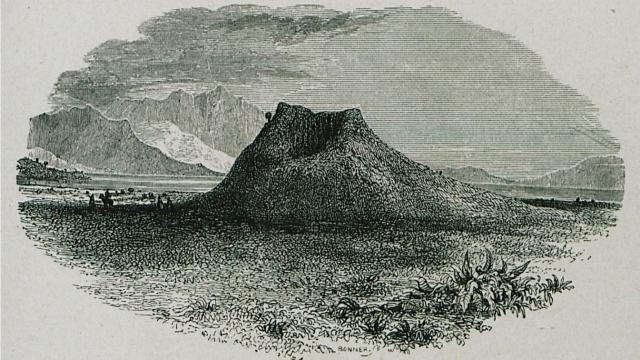
'Tumulus, or mound, at Marathon'. Designed by Captain Irton and engraved by G.W. Bonner, from Wordsworth, Christopher. 1839. Greece: Pictorial, Descriptive, and Historical, London: W. S. Orr and co: p. 113.
This paper traces the interpretations applied to the mound or soros on the plain of Marathon from the later eighteenth century through the nineteenth century by amateur archaeologists. These interpretations were based on flakes of obsidian found in the soil of the mound that were initially understood to be flint arrowheads by northern European travellers who were looking for signs of the famous Battle of 490 BCE. These artefacts acted as concrete signs that gave legitimacy to ancient texts like Herodotus'Histories and most especially Pausanias' Description of Greece. The paper argues that these “arrowheads” were central to creating a tangible link for the travellers between the battle of Marathon and aspirations for the freedom of Greece from Ottoman rule, and that they largely determined interpretations of the contents of the Marathon soros, even following official excavations at the end of the nineteenth century.
Dr Estelle Strazdins: Lecturer in Classics at the Centre for Classical Studies, ANU School of Literature, Languages and Linguistics.
Location
Speakers
- Estelle Strazdins (Lecturer in Classics at ANU School of Literature, Languages and Linguistics)
Event Series
Contact
- Anna Florin